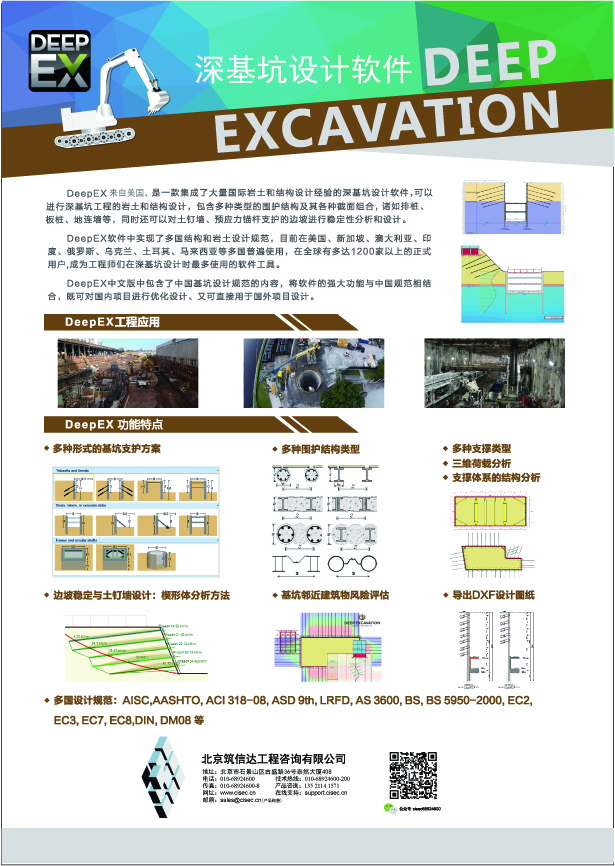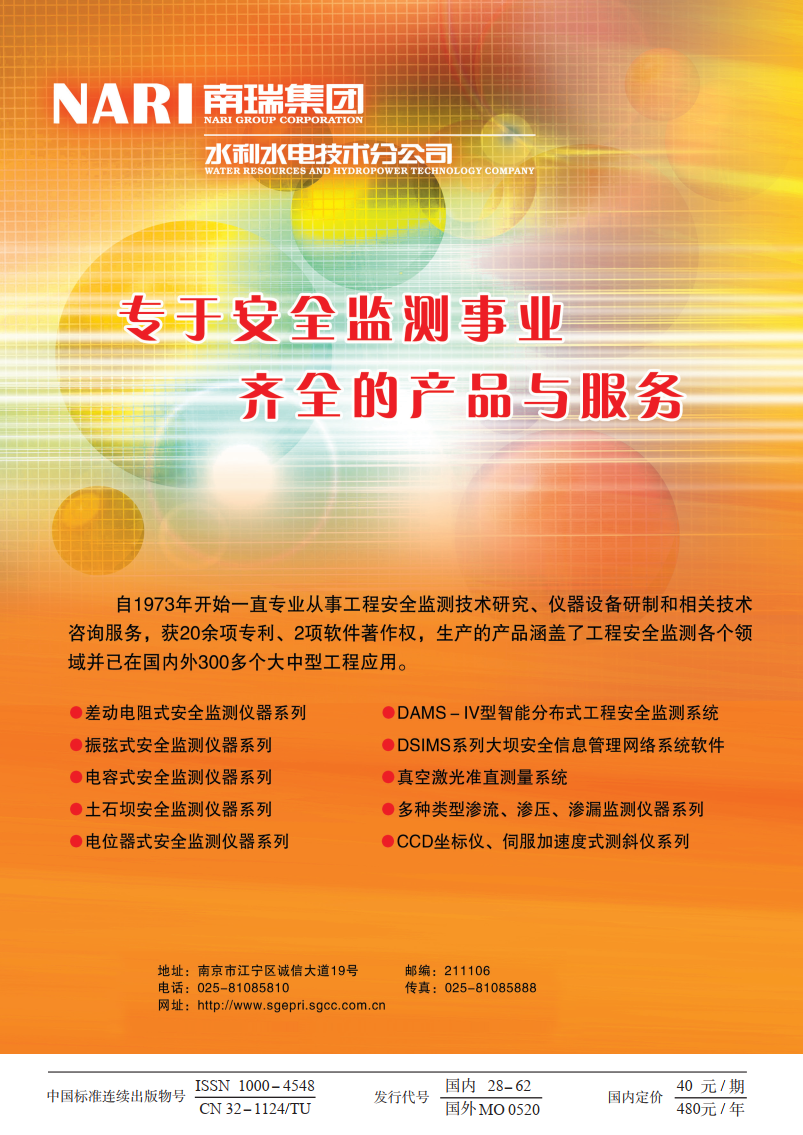| [1] |
NOLL W. A mathematical theory of the mechanical behavior of continuous media[J]. Archive for Rational Mechanics and Analysis, 1958,2:197-226
|
| [2] |
TRUESDELL C, TOUPIN R. The classical field theories[M]//FLUGGE S ed. Encyclopedia of Physics. Berlin: Springer-Verlag, 1960:226-793
|
| [3] |
PASSMAN S L, NUNZIATO J W, WALSH E K. A theory of multiphase mixtures[M]//TRUESDELL C ed. Rational Thermodynamics, 2nd Edition,New York:Springer-Verlag, 1984
|
| [4] |
CARATHÉODORY C. Investigations on the foundations of thermodynamics[J]. Mathematische Annalen, 1909,67:355-386
|
| [5] |
RICE J R. Inelastic constitutive relations for solids: an internal variable theory and its application to metal plasticity[J]. Journal of the Mathematics and Physics of Solids, 1971,19:433-455
|
| [6] |
COLLINS I F, HOULSBY G T. Application of thermomechanical principles to the modeling of geotechnical materials[C]//Proc Royal Society, London. 1997, A 453: 1975-2001
|
| [7] |
LUBLINER J. On the thermodynamic foundations of non-linear solid mechanics[J]. International Journal of Non-Linear Mechanics, 1972,7:237-254
|
| [8] |
MAIER G, HUECKEL T. Nonassociated and coupled flow rules of elastoplasticity for geotechnical media[C]//Proc 9th International Conference on Soil Mechanics and Foundation Engineering, Tokyo, Special session 7, Constitutive relations for soils, 1977: 129-142.
|
| [9] |
RICE J R. Continuum mechanics and thermodynamics of plasticity in relation to microscale deformation mechanics[M]//ARGON A S, ed. Constitutive equations in Plasticity, MIT Press,1975:23-79
|
| [10] |
LASHKARI A, GOLCHIN A. A Critical state sand model with elastic-plastic coupling[M]//YANG Q, ZHANG J M, ZHENG H, et al, eds. Constitutive Modeling of Geomaterials. Berlin: Springer. 2012: 199-206.
|
| [11] |
RICE J R. On the structure of stress-strain relations for time-dependent plastic deformation in metals[J]. Journal of Applied Mechanics, ASME,1970, 37:728-737
|
| [12] |
CRISTESCU N. Dynamic plasticity[M]. Amsterdam: North- Holland, 1967.
|
| [13] |
LUBARDA V A. Elastoplastic theory[M]. Boca Raton: CRC Press, 2002.
|
| [14] |
ZIEGLER H. An introduction to thermomechanics[M]. 2nd ed. Amsterdam: North-Holland. 1983.
|
| [15] |
HOULSBY G T, PUZRIN A M. Rate-dependent plasticity models derived from potential functions[J]. Journal of Rheology, 2002,46(1):113-126
|
| [16] |
ROSCOE K H, BURLAND J B. On the generalized stress-strain behavior of wet clay[M]//HEYMAN J, LECKIE F, eds. Engineering Plasticity. Cambridge: Cambridge University Press. 1968: 535-609.
|
| [17] |
COLLINS I F, KELLY P A. A thermomechanical analysis of a family of soil models[J]. Géotechnique, 2002,52(7):507-518
|
| [18] |
DRUCKER D C. A more fundamental approach to plastic stress-strain relations[C]//1st US National Congress on Applied Mechanics, ASME. 1951: 487-491.
|
| [19] |
ILYUSHIN A A. On a postulate of plasticity[M]. Prikl Mat Mekh, 1961,25:503-507
|
| [20] |
KOITER W. Stress-strain relations, uniqueness and variational theorems for elastic-plastic materials with a singular yield surface[J]. Quarterly of Applied Methematics, 1953,11:350-354
|
| [21] |
SANDERS J L. Plastic stress-strain relations based on infinitely many plane loading surfaces[C]//NAGHDI P M, ed. Proc 2nd US National Congress of Applied Mechanics ASME, 1954:455-460
|
| [22] |
HILL R. Aspects of invariance in solid mechanics[J]. Advances in Applied Mechanics, 1978,18:1-75
|
| [23] |
POOROSHASB H B, HOLUBEC I, SHERBOURNE A N. Yielding and flow of sand in triaxial compression, Parts 2 and 3[J]. Canadian Geotechnical Journal, 1967,4:376-397
|
| [24] |
LADE P V, DUNCAN J M. Cubical triaxial tests on cohesionless soil[J]. Journal of Soil Mechanics and Foundation Division, ASCE,1973, 99(SM10):793-812
|
| [25] |
LI X S, DAFALIAS Y F. Dilatancy for cohesionless soils[J]. Géotechnique, 2000,50(4):449-460
|
| [26] |
HILL R. The mathematical theory of plasticity[M]. London: Oxford University Press, 1950.
|
| [27] |
CUNDALL P A, STRACK O D L. A discrete numerical model for granular assemblies[J]. Géotechnique, 1979,29(1):47-65
|
| [28] |
MROZ Z, NORRIS V A, ZIENKIEWICZ O C. An anisotropic hardening model for soils and its application to cyclic loading[J]. International journal for Numerical and Analytical Methods in Geomechanics, 1978,2:203-221
|
| [29] |
MROZ Z. On the description of anisotropic work hardening[J]. Journal of the Mechanics and Physics of Solids, 1967,15:163-175
|
| [30] |
IWAN W D. On a class of models for the yielding behavior of continuous and composite systems[J]. Journal of Applied Mechanics, ASME,1967, 34(3):612-617
|
| [31] |
DAFALIAS Y F, POPOV E P. A model of nonlinearly hardening materials for complex loading[J]. Acta Mechanica, 1975,21(3):173-192
|
| [32] |
KRIEG R D. A practical two-surface plasticity theory[J]. Journal of Applied Mechanics, ASME,1975, 42:641-646
|
| [33] |
PREVOST J H. Mathematical modeling of monotonic and cyclic undrained clay behavior[J]. International journal for Numerical and Analytical Methods in Geomechanics, 1977,1(2):195-216
|
| [34] |
PREVOST J H. Plasticity theory for soil stress-strain behavior[J]. Journal of Engineering Mechanics, ASCE,1978, 104(5):1177-1194
|
| [35] |
WANG Z L, DAFALIAS Y F, SHEN C K. Bounding surface hypoplasticity model for sand[J]. Journal of Engineering Mechanics, ASCE,1990, 116(5):983-1001
|
| [36] |
TRUESDELL C. Hypo-elasticity[J]. Journal of Rational Mechanics and Analysis, 1955(4):83-133
|
| [37] |
TRUSDELL C, NOLL W. The non-linear field theories of mechanics[C]//FLUGGE S, ed. Encyclopedia of Physics. Berlin: Springer-Verlag, 1965.
|
| [38] |
RICHART F E Jr, HALL J R, WOODS R D. Vibrations of soils and foundations[M]//International Series in Theoretical and Applied Mechanics. Englewood Cliffs: Prentice-Hall, Inc. 1970
|
| [39] |
ZYTYNSKI M, RANDOLPH M F, NOVA R,et al. On modeling the unloading-reloading behavior of soils[J]. International Journal for Numerical and Analytical Methods in Geomechanics, 1978(2):87-93
|
| [40] |
EINAV I, PUZRING M. Pressure-dependent elasticity and energy conservation in elastoplastic models for soils[J]. Journal of Geotechnical and Geoenvironmental Engineering, ASCE,2004, 130(1):81-92
|
| [41] |
NOLL W. On material frame-indifference. Department of Mathematical Sciences, Carnegie Mellon University,Paper 580. http://repository.cmu.edu/math/580. 1995
|
| [42] |
WANG C C. A new representation theorem for isotropic functions: An answer to Professor G. F. Smith's criticism of my papers on representations for isotropic functions. I. Scalar-valued isotropic functions[J]. Archive for Rational Mechanics and Analysis, 1970a(36):166-197
|
| [43] |
WANG C C. A new representation theorem for isotropic functions: An answer to Professor G. F. Smith's criticism of my papers on representations for isotropic functions. II. Vector-valued isotropic functions, symmetric tensor-valued isotropic functions,and skew-symmetric tensor-valued isotropic functions. Archive for Rational Mechanics and Analysis, 1970b, 36:198-223
|
| [44] |
SMITH G. On isotropic functions of symmetric tensors, skew-symmetric tensors and vectors[J]. International Journal of Engineering Science, 1971(9):899-916
|
| [45] |
SPENCER A. Theory of invariants[M]//ERINGEN C, ed. Continuum Physics. New York: Academic Press, 1971.
|
| [46] |
DAFALIAS Y F. The plastic spin[J]. Journal of Applied Mechanics, ASME. 1985,52(4):865-871
|
| [47] |
DAFALIAS Y F. Plastic spin: necessity or redundancy? [J] International Journal of Plasticity, 1998,14(9):909-931
|
| [48] |
LI X S, DAFALIAS Y F. Anisotropic critical state theory: role of fabric[J]. Journal of Engineering Mechanics, ASCE,2012, 138(3):263-275
|
| [49] |
ARTHUR J R F, CHUA K S, DUNSTAN T. Induced anisotropy in a sand[J]. Géotechnique, 1977,27(1):13-30
|
| [50] |
ARTHUR J R F, KOENDERS M A, WONG R K S. Anisotropy in particle contacts associated with shearing in granular media[J]. Acta Mechanica, 1986(64):20-29
|
| [51] |
GUTIERREZ M, ISHIHARA K, TOWHATA I. Flow theory for sand rotation of principal stress direction[J]. Soils and Foundations, 1991,31:121-132
|
| [52] |
RUDNICKI J W, RICE J R. Conditions for the localization of the deformation in pressure sensitive dilatant materials[J]. Journal of the Mechanics and Physics of Solids, 1975,23:371-394
|
| [53] |
PAPAMICHOS E, VARDOULAKIS I, HAN C. Noncoaxial flow theory of plasticity: shear failure prediction in sand[M]//KOLYMBAS D, ed. Modern Approaches to Plasticity. Amsterdam: Elsevier, 1992:585-598
|
| [54] |
DAFALIAS Y F. Bounding surface plasticity, I. mathematical foundation and hypoplasticity[J]. Journal of Engineering Mechanics, ASCE,1986, 112(9):966-987
|
| [55] |
CASAGRANDE A. Characterestics of cohesionless soils affecting the stability of earth fills[J]. Journal of Boston Society of Civil Engineers, 1936,23:257-276
|
| [56] |
ROSCOE K H, SCHOFIELD A N, WROTH C P. On the yielding of soils[J]. Géotechnique, 1958,8(1):22-53
|
| [57] |
SCHOFIELD A N, WROTH C P. Critical state soil mechanics[M]. London: McGraw-Hill, 1968.
|
| [58] |
BEEN K, JEFFERIES M G. A state parameter for sands[J]. Géotechnique, 1985,35(2):99-112
|
| [59] |
NAKATA Y, HYODO M, MURATA H,et al. Flow deformation of sands subjected to principal stress rotation[J]. Soils and Foundations, 1998,38(2):115-128
|
| [60] |
YOSHIMINE M, ISHIHARA K, VARGAS W. Effects of principal stress direction and intermediate principal stress on undrained shear behavior of sand[J]. Soils and Foundations, 1998,38(3):179-188
|
| [61] |
ODA M. Initial fabrics and their relations to mechanical properties of granular materials[J]. Soils and Foundations, 1972a, 12(1):17-36
|
| [62] |
ODA M. The mechanism of fabric changes during compressional deformation of sand[J]. Soils and Foundations, 1972b, 12(2):1-18
|
| [63] |
MASSON S, MARTINEZ J. Micromechanical analysis of the shear behavior of a granular material[J]. Journal of Engineering Mechanics, ASCE,2001, 127(10):1007-1016
|
| [64] |
LI X, LI X. S. Micro-macro quantification of the internal structure of granular materials[J]. Journal of Engineering Mechanics, ASCE,2009, 135(7):641-656
|
| [65] |
ZHAO J D, GUO N, LI X S. Unique quantification of critical state in granular media considering fabric anisotropy[M]//YANG Q, ZHANG J M, ZHENG H, et al, eds. Constitutive Modeling of Geomaterials. Berlin: Springer. 2012: 247-252.
|








 下载:
下载:
